By Shamelle Fadul, Sabrina Garcia, Philip Vang, Andrew Vazquez, and Dustin Babb.
Here at the Stan State greenhouse, there are a wide variety of ferns. Ferns can be distinguished by their leaves that often hold spores on their undersides. Ferns are vascular plants and have true roots, stems, and complex leaves that allow them to reproduce through spores. With so many different kinds of ferns, how can we differentiate them? The answer is through their different characteristics.
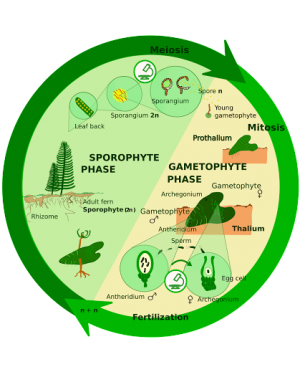
Life Cycle:
Before we learn more about the different types of ferns, let’s learn about some basic information! The image breaks down how the life cycle of a fern works. The life cycle happens in two parts, the gametophyte phase and the sporophyte phase. An adult fern(2n) will release spores(n) that develop into gametophytes(n), which produce eggs(n) and sperm(n) that fuse to create new sporophytes (2n).
NuriaWrite, CC BY-SA 3.0 via Wikimedia Commons
Sporophyte (2n) Morphology:
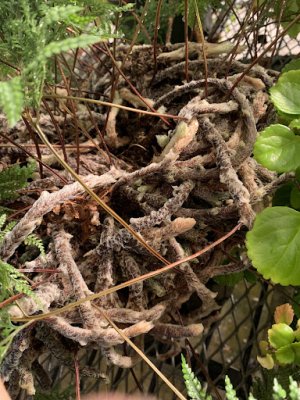
Most ferns have horizontal stems, called rhizomes. The fronds (leaves), and roots grow from these rhizomes, which can grow near the soil surface or along trees (as epiphytes).
This is the rhizome of Davallia fejeensis (rabbit's foot fern). It is native to Fiji, and grows on trees there. The visible hairs help it collect and hold rainwater.
Fern fronds are usually where one can find sporangia, where meiosis occurs and haploid (1n) spores are formed. The sporangia are clustered in structures called sori, which can take on many shapes.
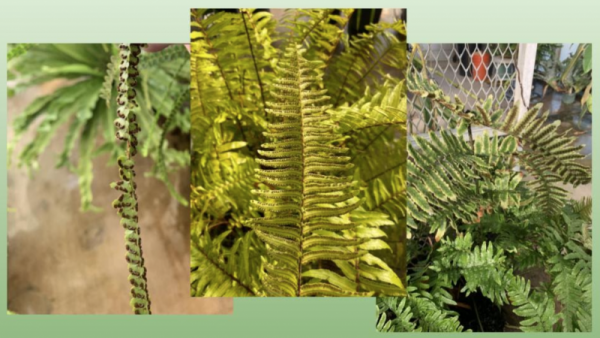
From left to right: Spores of the Button fern, Boston fern, and Japanese painted fern.
Several ferns and close relatives from the Stan State greenhouse:
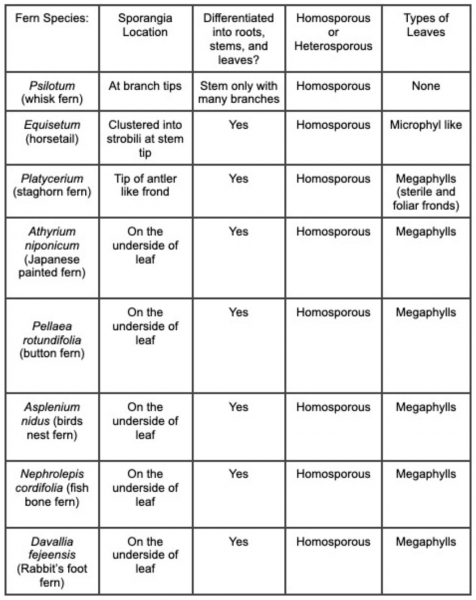
This table includes information about the locations of sporangia, morphological complexity, breeding system, and leaf type.
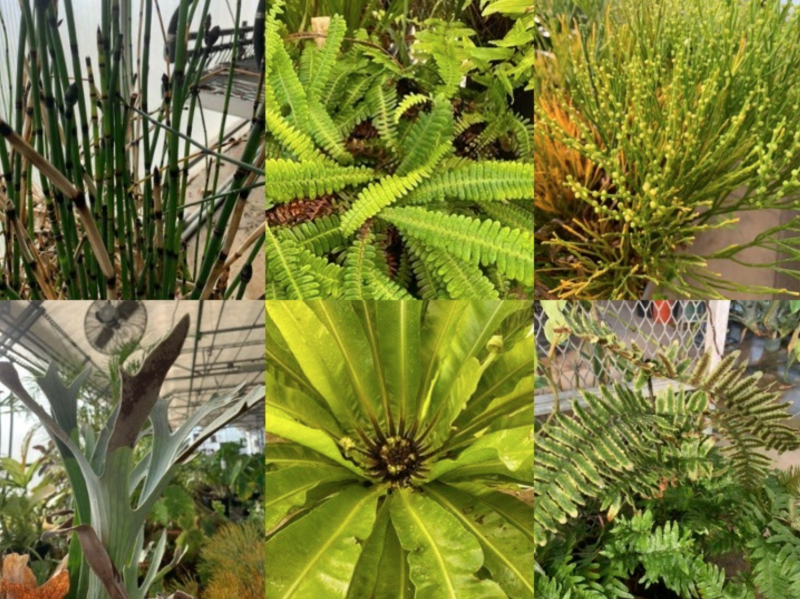
Top row from left to right: Horsetail, Fish bone fern, Whisk fern. Bottom row from left to right: Staghorn fern, Bird’s nest fern, Japanese painted fern.
References:
- Ding, Hui-Hui, et al. "Phylogeny and character evolution of the fern genus Tectaria (Tectariaceae) in the Old World inferred from chloroplast DNA sequences." Molecular Phylogenetics and evolution 80 (2014): 66-78.
- Haufler, Christopher H., et al. "Sex and the single gametophyte: Revising the homosporous vascular plant life cycle in light of contemporary research." BioScience 66.11 (2016): 928-937.
- Lehtonen, Samuli, et al. "Phylogenetics and classification of the pantropical fern family Lindsaeaceae." Botanical Journal of the Linnean Society 163.3 (2010): 305-359.
- Lehtonen, Samuli. "Towards resolving the complete fern tree of life." Plos one 6.10 (2011): e24851.
Updated: August 08, 2023